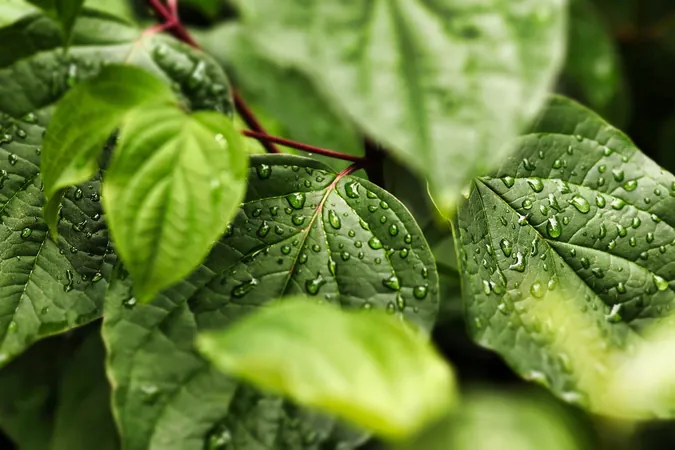
The Balancing Act of Nature: Plants Weigh Defense Against Growth in New Study
2024-11-07
Author: Liam
Introduction
A groundbreaking study has unveiled a critical trade-off in how plants allocate their resources: the more energy and nutrients dedicated to defense mechanisms, the less room there is for growth. This revelation comes from researchers at the University of Helsinki, who have highlighted the intricate relationships that shape biodiversity and plant adaptation.
The Threat of Pathogens
Pathogens threaten the survival of plant species by draining their fitness and, in severe cases, leading to mortality. However, researchers have noted remarkable differences among various plant species in their defense strategies. What explains this variation? Evolutionary theories suggest that the costs of resource allocation play a key role, yet proving this hypothesis has posed challenges—until now.
Study Findings
In a pivotal publication in the journal Science, postdoctoral researcher Michael Giolai and Professor Anna-Liisa Laine utilized vast open databases to analyze defense genes and growth characteristics across 184 different plant species. Their findings revealed an astonishing range in the number of defense genes among species, with some having as few as 44 while others boasted an impressive 2,256. For instance, while the common asparagus has only 72 resistance genes, certain chili varieties shine with a remarkable 1,095 defense genes.
The Trade-off Between Defense and Growth
Importantly, the researchers identified a striking negative correlation between the allocation of resources for defense and the potential for growth. Simply put, the more of a plant's genetic makeup that is devoted to defense, the less it can thrive in terms of growth. Giolai remarked, "Our study demonstrates the significant role of allocation costs in the generation and maintenance of biodiversity. It also sheds light on the mechanisms that limit the evolution of these defenses."
Understanding Allocation Costs
The concept of allocation costs refers to the dilemma plants face when distributing their finite resources across various life functions. By devoting significant resources to fend off threats, they may inadvertently stunt their growth. This trade-off causes plants to navigate a delicate equilibrium, where bolstered defenses could mean diminished growth, and vice versa.
Cultivated Plants and Genetic Diversity
Interestingly, the study also explored cultivated plants, noting that the expected negative correlation between defense and growth was absent in species that have been bred for specific characteristics, resulting in reduced genetic diversity. This phenomenon underscores the complexities of agricultural practices and the implications of selective breeding on plant health and productivity.
The Role of Open Science
Giolai and Laine's research exemplifies the power of open science, demonstrating how shared databases can pave the way for expansive research that a single lab could not undertake alone. As Laine put it, "If we want to understand the mechanisms that maintain interspecies trait variation, a multi-species approach like this is essential. The increasing availability of open data enables entirely new levels of investigation into these questions."
Conclusion and Implications
These findings not only deepen our understanding of plant biology but also carry significant implications for agriculture and conservation. As we continue to unravel the secrets of plant adaptations, it becomes clearer that safeguarding our ecosystems will require a balanced approach to resource allocation—both in the wild and in our cultivated landscapes. Stay tuned—more astonishing discoveries are on the horizon as researchers unlock the mysteries of plant life!









 Brasil (PT)
Brasil (PT)
 Canada (EN)
Canada (EN)
 Chile (ES)
Chile (ES)
 España (ES)
España (ES)
 France (FR)
France (FR)
 Hong Kong (EN)
Hong Kong (EN)
 Italia (IT)
Italia (IT)
 日本 (JA)
日本 (JA)
 Magyarország (HU)
Magyarország (HU)
 Norge (NO)
Norge (NO)
 Polska (PL)
Polska (PL)
 Schweiz (DE)
Schweiz (DE)
 Singapore (EN)
Singapore (EN)
 Sverige (SV)
Sverige (SV)
 Suomi (FI)
Suomi (FI)
 Türkiye (TR)
Türkiye (TR)